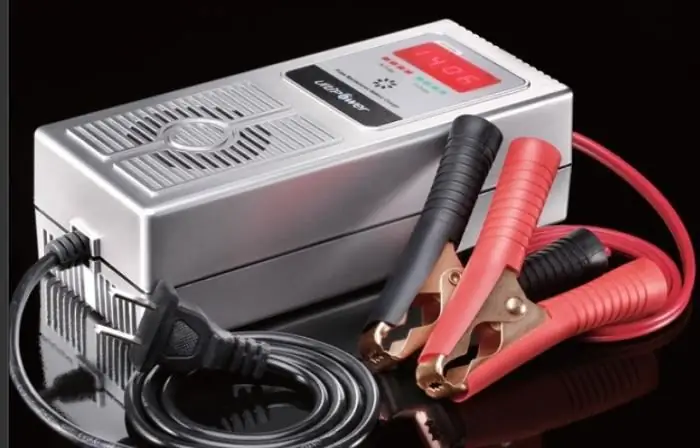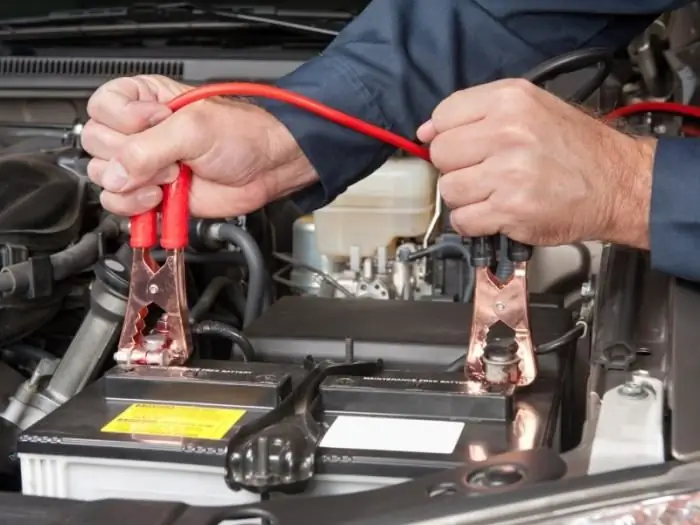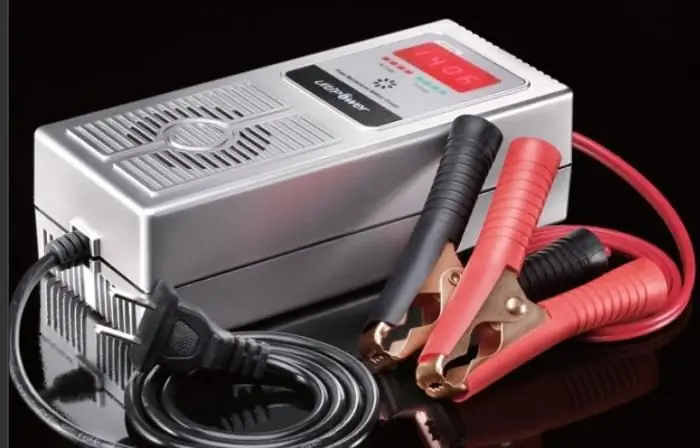Sooner or later, every car enthusiast faces the problem of a dead battery, especially when the temperature drops below zero. And after a couple of launches by the “lighting up” method, there is a firm belief that the automatic charger is one of the essentials. The market today is simply replete with a variety of such devices, from which the eyes literally run up. Various manufacturers, colors, shapes, designs and, of course, prices. So how do you figure it all out?
Choosing an automatic charger

Before you go shopping, you need to decide which battery to charge. They come in a variety of types: serviced and unattended, dry-charged or flooded, alkaline or acidic. The same goes for chargers: there are manual, semi-automatic and automatic car battery chargers. Latest chooseit is preferable because it requires practically no outside intervention, and the entire charging process is controlled by the device itself.
They provide the most optimal battery charging mode, while there is no overvoltage dangerous for the battery. Smart electronic filling will do everything according to the correct, predetermined algorithm, and some devices are able to determine the degree of battery discharge and its capacity, and independently adjust to the desired mode. This automatic charger is suitable for almost any type of battery.
Most modern chargers and chargers have a so-called fast charging mode (BOOST). In some cases, this can really help out a lot when, due to a weak battery charge, it is not possible to start the engine with a starting device. In this case, it is enough to charge the battery in BOOST mode for literally a few minutes, and then start the engine. Do not charge the battery for a long time in BOOST mode, as this can significantly shorten its life.
How does the automatic charger work?
Usually this device, regardless of manufacturer and price category, is designed to charge and clean plates from lead sulfate (desulfation) of twelve-volt batteries with a capacity of 5 to 100 Ah, as well as quantify their charge level. Such a charger is equipped with protection against incorrect connection and short circuit of the terminals. The use of microcontroller control allowschoose the optimal mode for almost any battery.

The main operating modes of the automatic charger:
- Charging mode. It usually occurs in several stages: first, a charge occurs until a voltage of 14.6 V is reached with a stable current of 0.1 C (C is the battery capacity in Ah), then a charge with a voltage of 14.6 V occurs until the current drops to 0, 02 C. At the next stage, a stable voltage of 13.8 V is maintained until it reaches 0.01 C, and at the final stage the battery is recharged. When the voltage drops below 12.7 V, the cycle repeats.
- Desulfation mode. In this mode, the device works in the following cycle: 5 seconds of a charge with a current of 0.1 C, followed by a 10-second discharge with a current of 0.01 C until the battery voltage reaches 14.6 V, after which normal charging occurs.
- Battery test mode. Allows you to determine the degree of its discharge. In this mode, after the battery is loaded with a current of 0.01 C for 15 seconds, the voltage at its terminals is measured.
- Control-training cycle. When an additional load is connected and the charge or training mode is turned on, the battery is first discharged to 10.8 V, after which the specified mode is activated. By measuring the current and charge time, the approximate capacity of the battery is calculated, which is displayed on the display when charging is completed.

It should be remembered that a properly selected automatic charger for a car battery can not only ensure its reliable and uninterrupted operation, but also significantly extend its service life.






